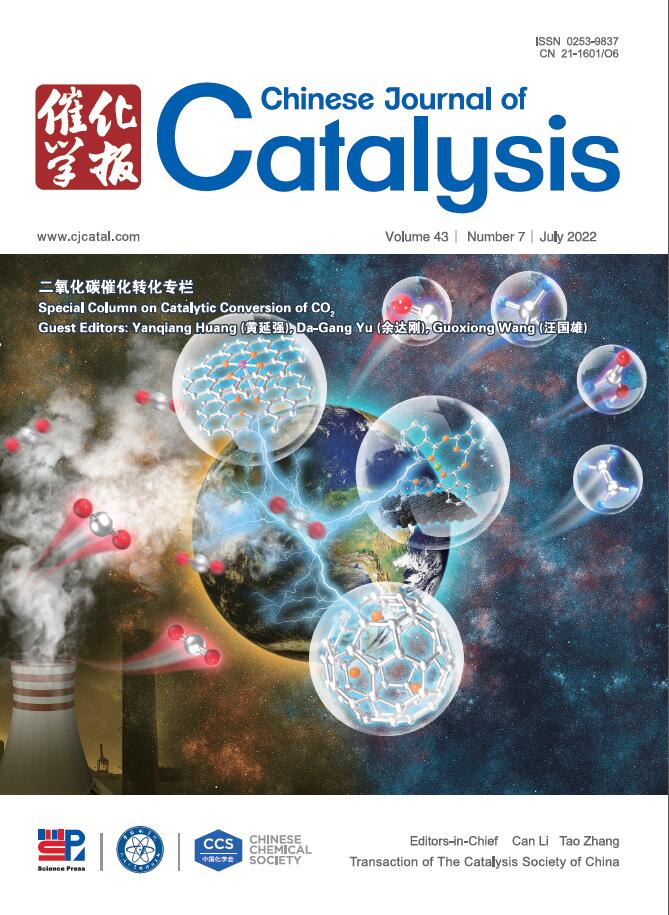Proximity electronic effect of adjacent Ni Site enhances compatibility of hydrogenation and deoxygenation over Cu Site to boost nitrate electroreduction to ammonia
IF 15.7
1区 化学
Q1 CHEMISTRY, APPLIED
引用次数: 0
Abstract
Electrocatalytic conversion of nitrate to ammonia (NITRR) can simultaneously achieve the removal of nitrate and the synthesis of value-added ammonia, a promising candidate to replace Haber-Bosch process with low carbon dioxide emissions. However, high hydrogenation energy barrier for *NO intermediates and insufficient supply of active hydrogen cause slow hydrogenation process, and further result in low efficiency of nitrate conversion and ammonia synthesis. Herein, a series of tandem catalysts, one-dimensional coordination polymers (1D CCPs) with dual sites are synthesized and obtained 190.4 mg h–1 mgcat–1 ammonia production rate with Faradaic efficiency of 97.16%, outperforming to the most of recent reported catalysts. The catalytic performances are well-maintained even after a long-term stability test of 1200 h, laying the foundation for practical applications. Density functional theory results reveal that the stationary adsorbed *NO on Ni site induced proximity electronic effect could reduce the energy barrier for hydrogenation of *NO intermediates over Cu site. In addition, the Ni site in the dual sites 1D CCPs is conducive to generating active hydrogen, providing rich proton source to boost the hydrogenation of *NO, and further enhancing the compatibility of deoxygenation and hydrogenation process. Our work paves a new insight into the mechanism of NITRR process and will inspire more research interests in exploring the proximity electronic effect in catalytic process.
求助全文
约1分钟内获得全文
求助全文
来源期刊

Chinese Journal of Catalysis
工程技术-工程:化工
CiteScore
25.80
自引率
10.30%
发文量
235
审稿时长
1.2 months
期刊介绍:
The journal covers a broad scope, encompassing new trends in catalysis for applications in energy production, environmental protection, and the preparation of materials, petroleum chemicals, and fine chemicals. It explores the scientific foundation for preparing and activating catalysts of commercial interest, emphasizing representative models.The focus includes spectroscopic methods for structural characterization, especially in situ techniques, as well as new theoretical methods with practical impact in catalysis and catalytic reactions.The journal delves into the relationship between homogeneous and heterogeneous catalysis and includes theoretical studies on the structure and reactivity of catalysts.Additionally, contributions on photocatalysis, biocatalysis, surface science, and catalysis-related chemical kinetics are welcomed.
 求助内容:
求助内容: 应助结果提醒方式:
应助结果提醒方式:


